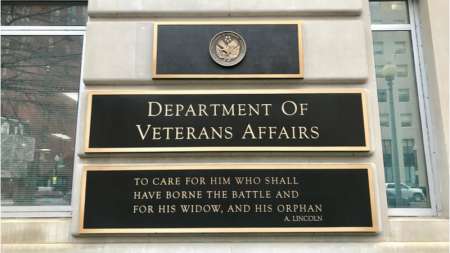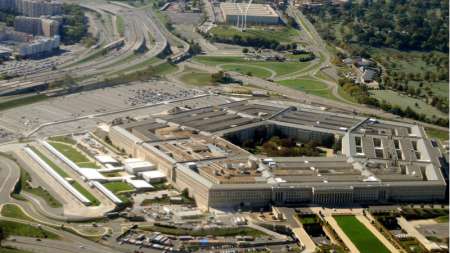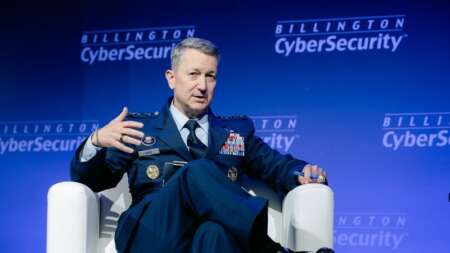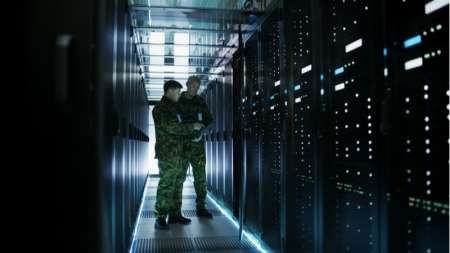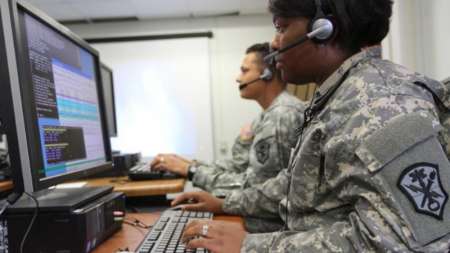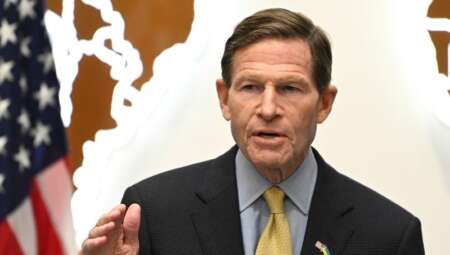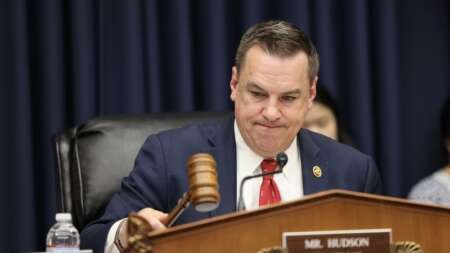Sens. Maggie Hassan, D-N.H., and John Cornyn, R-Texas, introduced a bipartisan bill today that would reauthorize the State and Local Cybersecurity Grant Program (SLCGP), a key program that helps state, local, and tribal governments prevent cyberattacks. […]
The Department of Veterans Affairs (VA) said on Nov. 24 it has eliminated its backlog of Civilian Health and Medical Program of the Department of Veterans Affairs (CHAMPVA) applications – a program that offers health care benefits to more than 900,000 qualifying beneficiaries – with the help of artificial intelligence (AI). […]
The U.S. Coast Guard (USGS) is seeking industry input on commercial artificial intelligence (AI)-enabled solutions to modernize its procurement and acquisition processes, issuing a request for information (RFI) for market research and planning purposes. […]
The Pentagon is rolling out a revised cyber force generation model aimed at increasing the effectiveness of its cyber forces and providing improved operational support to the Joint Force. […]
Without strong cybersecurity and privacy safeguards, growing collections of law enforcement data pose an “existential” threat, as adversaries exploit that information to compromise major investigations, the Center for Internet Security (CIS) and Multi-State Information Sharing and Analysis Center (MS-ISAC) warned in a new report. […]
The Information Technology Industry Council (ITI), a global tech trade association, released a new paper on Nov. 7 that outlines recommendations for policymakers focused on fostering adoption and promoting trust in agentic artificial intelligence (AI). […]
The Consumer Financial Protection Bureau’s (CFPB) overall information security program is ineffective, and the agency continues to face challenges safeguarding and tracking its IT equipment, according to two recent reports from the CFPB’s Office of Inspector General (OIG). […]
The Department of Energy (DOE) announced Tuesday $625 million in funding to support its five National Quantum Information Science (QIS) Research Centers, which were originally established by the National Quantum Initiative Act in 2018. […]
In a year marked by escalating cyber threats, 2025 has already witnessed major cyberattacks on state and local governments across 44 U.S. states, highlighting the growing vulnerability of critical infrastructure to malicious actors, according to a new cyber threat snapshot from the House Committee on Homeland Security (HCHS). The snapshot illustrates a clear trend of increasing cyberattacks targeting U.S. networks and critical infrastructure since 2024. […]
Federal agencies that trade drawn-out pilots for shorter, mission-based “test drives” will give employees hands-on experience with new tools while reducing risk and accelerating change, industry officials shared Wednesday at the Google Public Sector Summit in Washington. […]
From state and local systems to the FBI, government officials said Wednesday that fragmented systems remain one of the biggest obstacles to effective cybersecurity, but unified, artificial intelligence (AI)-powered systems are beginning to change that. […]
Chairman of the Joint Chiefs of Staff Gen. Dan Caine delivered a stark message Wednesday during the Google Public Sector Summit in Washington, D.C., warning that global threats are rising and calling for a united push to harness artificial intelligence (AI) across sectors. […]
Everyone knows that artificial intelligence (AI) can improve efficiency and productivity – but how do you get started and get your team excited about it? Several city and state officials have an answer: Get your team trained and find those who are excited about it. […]
The U.S. Marine Corps postponed its upcoming Generative Artificial Intelligence workshop “until early FY 2026” due to the ongoing federal government shutdown, according to a service-wide message. […]
Federal officials from the Library of Congress and the Department of Energy (DOE) said their agencies are focusing on deploying artificial intelligence (AI) systems that are low risk but deliver measurable value – emphasizing responsible experimentation and strong data over novelty. […]
Despite high investment in artificial intelligence, most public and private sector organizations are still failing to see meaningful returns – a problem rooted not in technology but in culture and measurement, a top federal official said Monday. […]
The Department of the Air Force is inviting private companies to build large-scale artificial intelligence (AI) data centers on unused land at five military bases. […]
Sen. Deb Fischer, R-Neb., on Thursday voiced her support of the Broadband Equity, Access, and Deployment (BEAD) program, while criticizing recent changes to the program that she said have minimized Nebraska’s ability to deploy fiber-based broadband. […]
For the first time in years, the United States is no longer making progress in bolstering its cyber defenses and is instead “stalling” and “slipping” in its ability to protect itself and allies, the successor organization to the U.S. Cyberspace Solarium Commission (CSC) revealed in a report published Wednesday. […]
The U.S. Army is taking bold steps to modernize its human resources systems, harnessing artificial intelligence (AI) to deliver faster, more personalized support for soldiers, veterans, and their families. […]
The U.S. Army Human Resources Command (AHRC) is incorporating artificial intelligence (AI) into its noncommissioned officer (NCO) promotion boards to speed and streamline candidate evaluations, officials announced last week at the Association of the U.S. Army’s annual meeting. […]
President Donald Trump has declared October 2025 as Cybersecurity Awareness Month – making it the 22nd consecutive year of that designation. […]
The next major conflict may not begin with bombs or bullets but with keystrokes and code, a senior official for the U.S. Army warned Tuesday at the Association of the United States Army annual conference. […]
The Cybersecurity and Infrastructure Security Agency (CISA) issued an emergency directive on Wednesday in response to a “significant cyber threat” targeting federal networks through certain devices and software made by the technology company F5. […]
Sen. Richard Blumenthal, D-Conn., the ranking member of the Senate Permanent Subcommittee on Investigations (PSI), is asking three major Medicare Advantage insurers to disclose whether they use artificial intelligence or other predictive technologies to make decisions about patient care. […]
Speaking during a Defense News livestream at the Association of the United States Army’s Annual Meeting on Monday, Brandon Pugh, the Army’s principal cyber advisor, outlined plans to overhaul how the service manages its expanding data enterprise. […]
David Sacks, the White House’s artificial intelligence “czar,” said he wants to preempt a patchwork of state AI regulations, saying that current legislation may push diversity, equity, and inclusion (DEI) requirements onto developers. […]
Gen. Kenneth Wilsbach, President Donald Trump’s nominee to become the next chief of staff of the Air Force, warned senators this week that while the service is successfully recruiting cyber talent, it faces an urgent crisis in retaining and training skilled cyber professionals. […]
Rep. Richard Hudson, R-N.C., said Wednesday that getting the Broadband Equity, Access, and Deployment (BEAD) program off the ground – along with key permitting reforms – is his “top priority” this Congress. […]
Brig. Gen. Linda J. Riedel with the South Carolina National Guard, who currently serves as assistant adjutant general for the Army, has been selected as the incoming deputy commanding general of the U.S. Army Cyber Center of Excellence. […]


